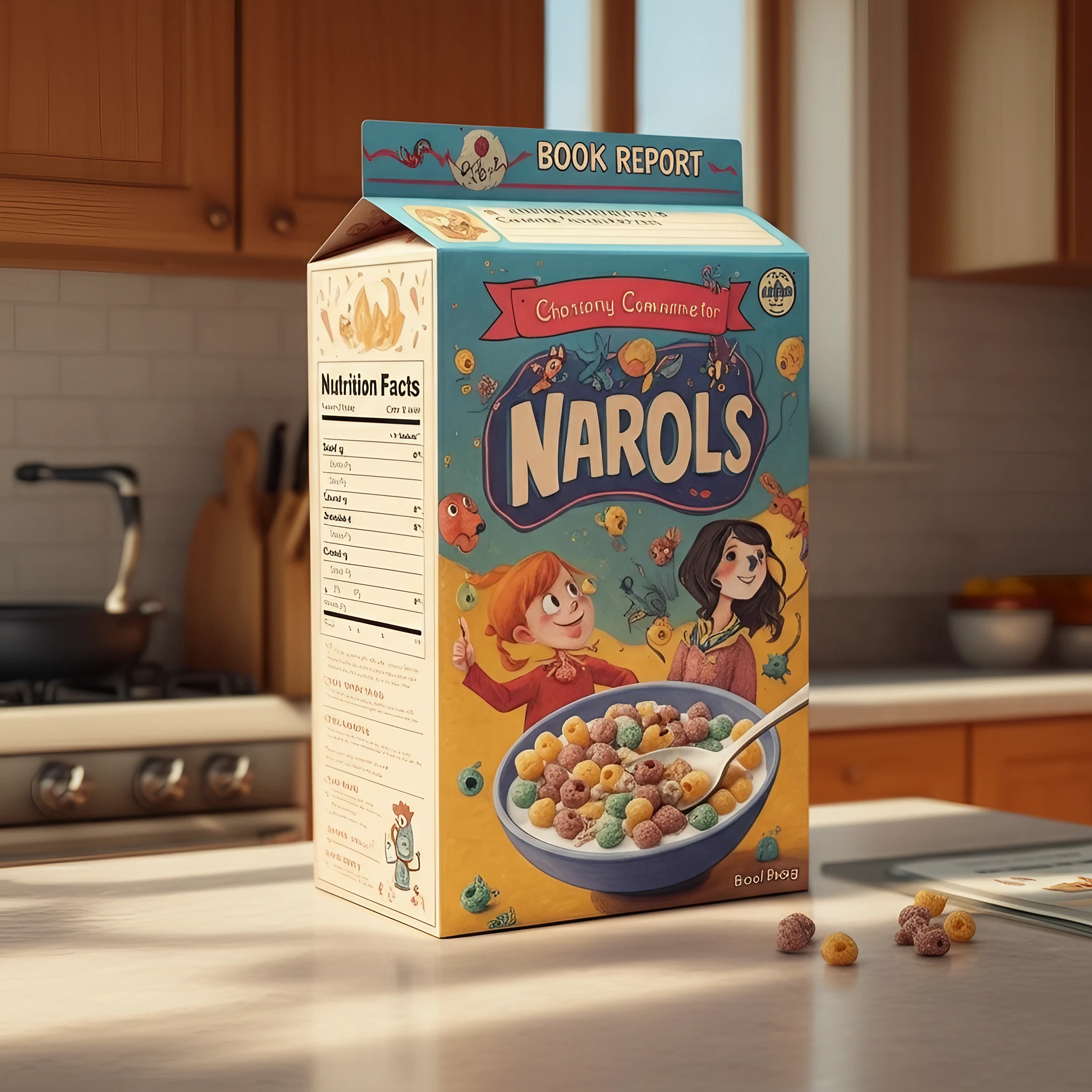Book reports just got a whole lot more creative! If you’re a student, teacher, or parent, you’re going to love this fresh take on the traditional book report. A cereal box book report combines artistic flair with literary analysis, making it a fun and engaging project for kids. Best of all, it gets students excited about reading while allowing them to showcase their creativity.
Curious about how to create a cereal box book report or looking for inspiration? We’ve got you covered with examples, tips, and a complete guide to crafting the ultimate cereal box masterpiece.
What is a Cereal Box Book Report?
Imagine turning your favorite book into a cereal box! Each part of the cereal box represents an aspect of the book you’ve read—from the characters to the plot points. Creative elements like designing the “cereal brand” based on the book’s theme or adding illustrations bring a fun twist to a standard book report. This type of project taps into both creativity and comprehension, making it a hit in classrooms and at home.
Benefits of Cereal Box Book Reports
- Encourages Creativity: Combines artistic skills with reading comprehension.
- Engages Students: Adds a hands-on, enjoyable aspect to literary assignments.
- Improves Understanding: Breaks down the book into digestible sections like characters, plot, and themes.
- Builds Presentation Skills: Students often present their cereal box book report to classmates, translating their thoughts into verbal communication.
Steps to Create a Cereal Box Book Report
1. Gather Your Materials
You’ll need:
- An empty cereal box
- Construction paper or wrapping paper
- Markers, crayons, or colored pencils
- Glue, tape, and scissors
2. Cover the Box
Wrap the cereal box in plain construction paper or wrapping paper. This clean “canvas” will serve as the background for your design.
3. Design the Front Cover
Include:
- The title of the book
- The author’s name
- A creative “brand name” for the cereal that ties into the book’s theme (e.g., “Hunger Games Crunch”).
- An illustration or scene from the book
4. Create the Side Panels
Panel 1: Character Descriptions
- List key characters and describe their traits. Bonus points for drawing their likeness beside their descriptions.
Panel 2: The Plot
- Break down the plot into simple sections such as the beginning, middle, and end. Highlight important events and key moments.
5. Design the Back Panel
Include:
- A game or activity related to the book (e.g., a crossword puzzle with character names or a “spot the difference” picture).
- Fun facts or trivia about the book or author.
6. Add Tasting Notes
Why should someone read this book? Write a short section on why the audience would enjoy it. Use phrases like “If you love adventure, you’ll savor every moment!”
7. Personal Touches
Encourage kids to add anything else that makes their cereal box unique. For example, glitter accents, stickers, or a handmade prize inside the box!
Cereal Box Book Report Examples by Grade Level
Elementary Level:
- Theme: “Magic Froot Loops” for “Harry Potter and the Sorcerer’s Stone.”
- Front cover with Harry flying on his broomstick.
- A maze activity on the back panel titled “Help Harry Reach the Sorcerer’s Stone.”
Middle School Level:
- Theme: “Historical Crunchies” for “Anne Frank’s Diary.”
- Focus on the historical significance in the side panels with a timeline on the plot panel.
High School Level:
- Theme: “Revolutionary Bites” for “1984” by George Orwell.
- A crossword puzzle featuring significant terms like “Big Brother” or “Newspeak” on the back.
- Character descriptions offering deep insights into Winston and Julia.
Tips for Making It Visually Appealing
- Use bright colors and bold text to attract attention.
- Create 3D effects with pop-up elements or layered materials.
- Stay neat! Use rulers to align text and illustrations.
Presenting Your Cereal Box
Set aside a day for presentations. Students can take turns showcasing their projects and sharing why they chose their design elements. This interaction helps build confidence and lets classmates learn about new books.
Grading Rubric for Teachers
- Creativity (25%): How original and eye-catching is the design?
- Content (35%): Is the book well-represented across all panels?
- Writing Quality (20%): Are spelling and grammar correct?
- Presentation (20%): Was the student able to confidently explain their work?
Final Thoughts
Cereal box book reports take the dread out of traditional assignments and add a splash of excitement that all ages can enjoy. Whether you’re a teacher assigning this project, a parent helping your child, or a student tackling it solo, the creativity and fun in this project are endless.
Want curious bookworms to fall in love with learning? Share this article with them, and feel free to get started on your own cereal box project today!
While we can’t generate actual images here, here are a few image ideas that could accompany your article:
- A photo of brightly decorated cereal boxes with book themes.
- Close-ups of illustrated panels featuring character descriptions and back panel games.
- A step-by-step visual guide showing how to wrap and decorate the cereal box.
- Examples of boxes for different grade levels (e.g., Harry Potter for elementary, “Anne Frank’s Diary” for middle school).








